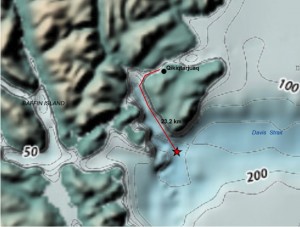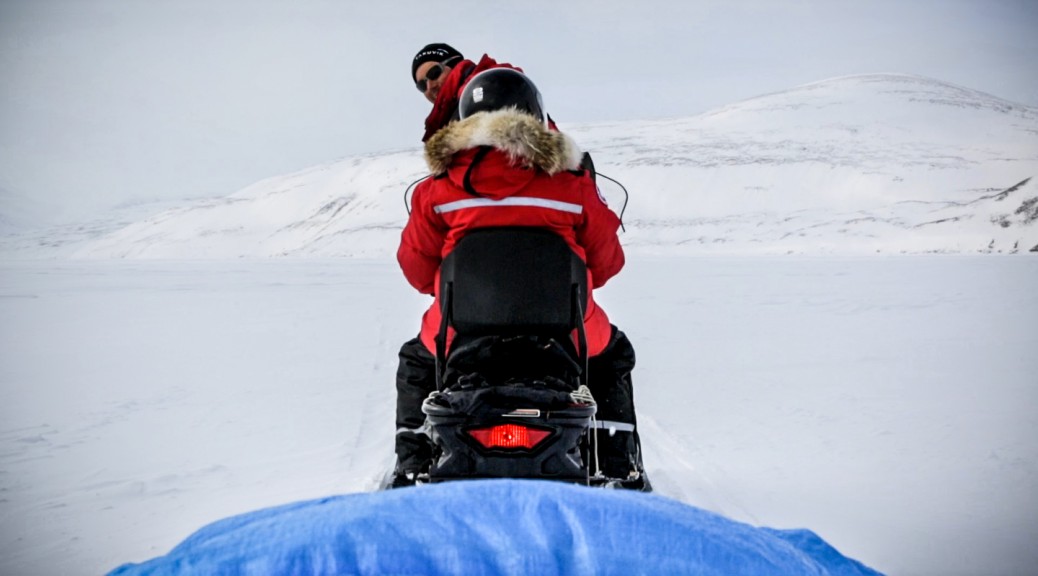In 2015 the Green Edge Project established an ice camp near Qikiqtarjuaq, Nunavut between mid-March and mid-July. The main scientific objective of the Green Edge 2015 ice camp was to follow the phytoplankton spring bloom (PSB) cycle in its entirely.

Completed operations in 2015:
- Establishment of an ice camp 30km from the community of Qikiqtarjuaq (67° 29.23N and 63° 38.00W) consisting of a polarheaven tent and a wooden cabin built on a sledge.
- Dismantlement of the camp on June 24, but continued visits to the site until July 15.
- Nearly 50 days of full-station sampling at the ice camp between mid-March and mid-July transporting scientists and equipment by skidoo and Qamutik.
- Sampling 20 categories of measurements that will be described in field reports.
- Participation of 47 researchers from Canada, France and the USA in the whole GreenEdge project
- Measurement of targeted parameters.
Preliminary results
Satellite images of sea-ice concentration (AMSR-2 data) showed that the 2015 onset of sea-ice melt was about two weeks later than the 1980-2014 climatology.
We captured the onset and the release of the ice algae attached to the bottom of the ice sheet. The ice algae drifted in the water column for a short period before sinking. As the ice thinned and melt ponds appeared at the surface of the ice sheet, the chlorophyll a concentration beneath the ice increased. Later than expected, ice algae were succeeded in time by phytoplankton species such as Thalassiosiara sp. and Chaetoceros sp., whose numbers escalated as the surface water warmed.
Those preliminary results provide information on the seasonal development of the magnitude and composition of the PSB and of carbon export fluxes at a high-temporal resolution. This will allow for detailed modelling of the evolution of Arctic PP and related carbon fluxes.
In the following link you will find the database of the variables sampled in 2015: Green Edge Parameters.
Below you will see a presentation of the ice camp 2015:


